Brazilian Queen's Manor Red and Yellow Bourbon Coffee beans Queen's Manor Coffee Flavor Story
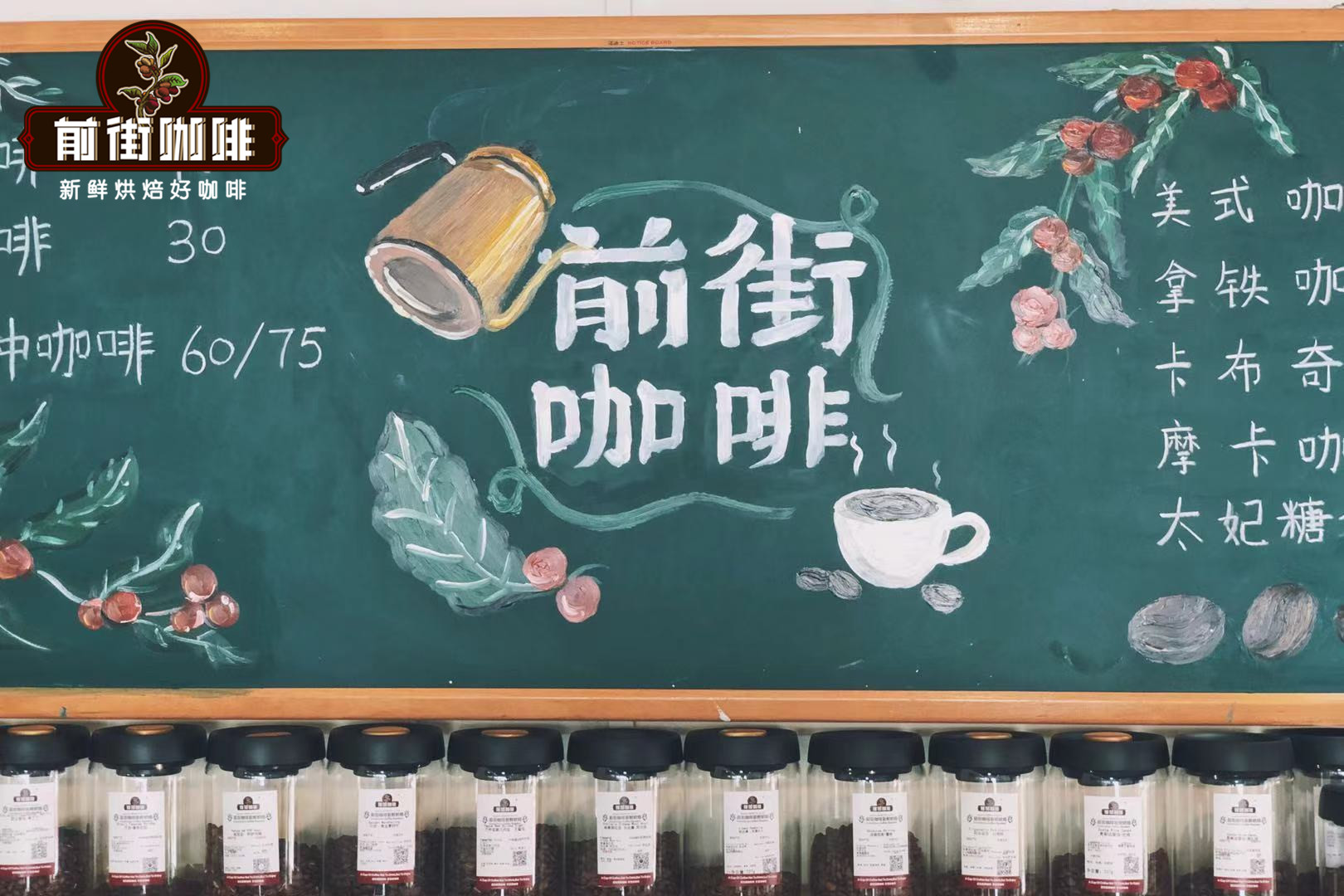
Professional coffee knowledge exchange more coffee bean information please follow the coffee workshop (Wechat official account cafe_style)
Central and South America is the largest coffee producing area in the world, and the amount of output here obviously affects the global price of raw coffee beans. Among them, Brazilian coffee is the country with the largest output in Central and South America, and it is also the largest country in coffee production. Brazilian coffee can account for more than 30% of the global output at most. As long as the production of Brazilian coffee increases, global coffee prices may fall sharply, which should not be underestimated! Most Brazilian coffee flavors are gentle and solid, like roasted hazelnuts and cream, with a low sour taste, a long, light finish and a smooth texture. The original intention of Qianjie Coffee is to taste coffee beans from all over the world, to understand every coffee variety, every coffee producing area, every processed flavor, to compare and establish a visual database. Qianjie Coffee hopes that every coffee lover can learn more about the coffee world and explore it with Qianjie Coffee.
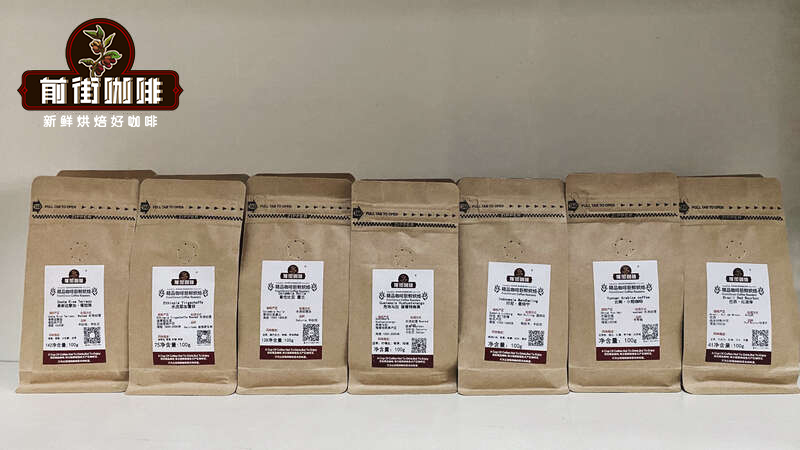
The latest Brazilian coffee
Influence of epidemic situation
The title of number one coffee production has brought considerable economic income to Brazil, but it is also very large in terms of manpower demand. Brazil was the last country in the Western Hemisphere to abolish slavery at that time. It is because it takes a lot of manpower to grow and pick coffee. Now affected by the novel coronavirus epidemic, Brazil is worried that the epidemic will break out seriously with the arrival of the coffee picking season, thus delaying coffee exports, so it is expected that this year's Brazilian coffee harvest will be delayed.
The benefits of shade trees
As a result of global warming, coffee-growing areas in Brazil will be greatly reduced in the future, and new research confirms that Brazilian shade trees can help cushion the rise in temperature, which is good news for growers. Studies have shown that covering 50% of shade tree species in the planting area can retain up to 75% of the production capacity of the area.
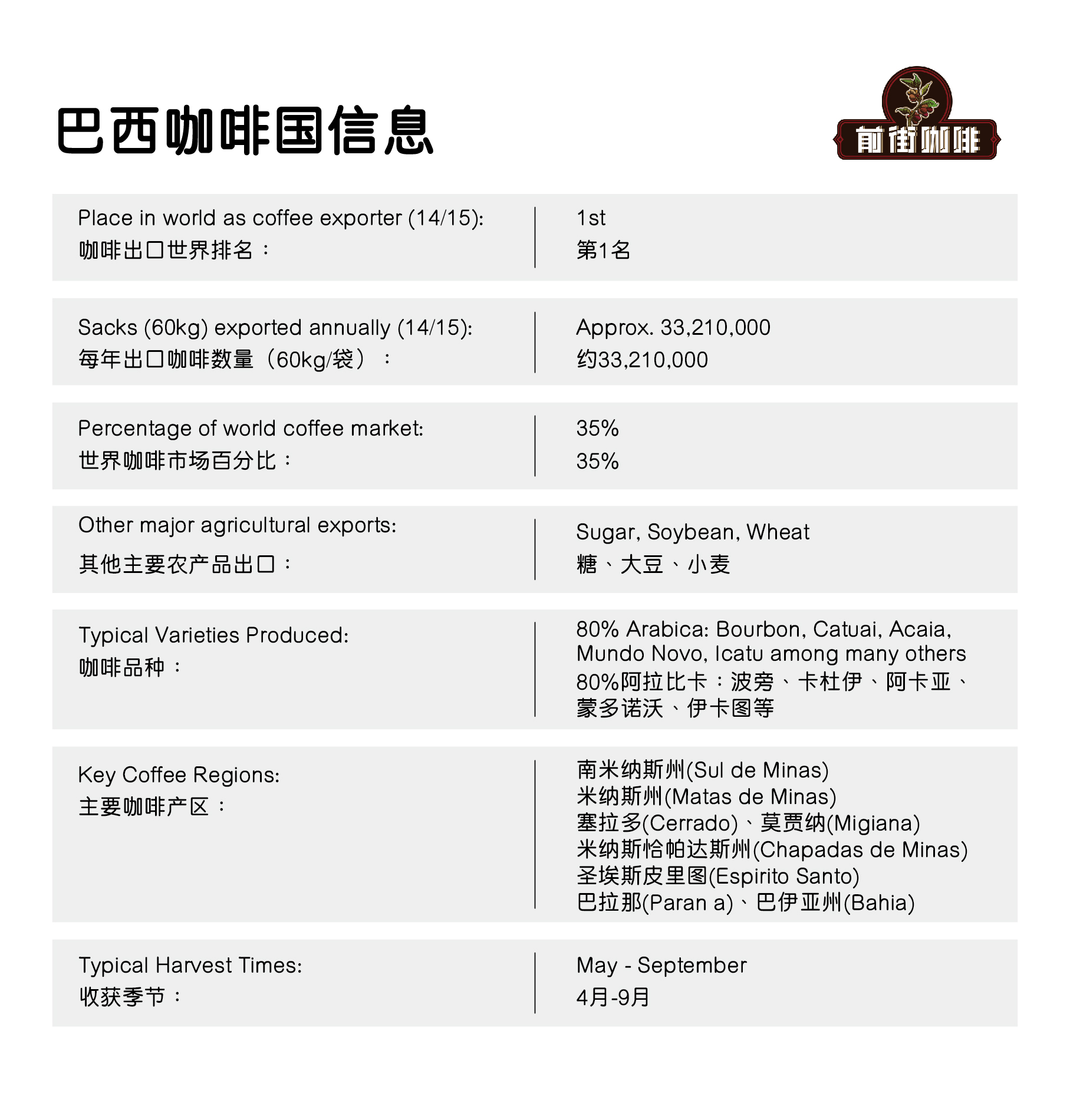
Balance of Brazilian Coffee
Because Brazil's altitude is low among Central and South American countries, it also lacks microclimate. Under various conditions, the coffee beans planted are low in acidity but soft enough, nutty, sweet and mellow with chocolate. However, some coffee lovers will pick on the acid of Brazilian coffee beans and feel that it is too mediocre and not special enough. In fact, it also shows that coffee culture is like this, there are praise and criticism, a coffee bean fame is able to withstand praise and criticism.
Queen's Manor
This coffee comes from Fazenda Rainha, a 280-acre estate located in Vale da Grama, an ancient volcanic valley in Brazil.
In 2011, the estate won the Brazilian COE competition. Fazenda Rainha belongs to the famous and respected coffee family Carvalho Dias family. Carvalho Dias 'four large estates have won prizes every year since the first Brazilian COE competition in 1999. In the past seven years, they have won more than 12 prizes. In 2004, they even won the championship, 9th, 11th, etc., many large and small estates in Brazil.
For many years, it has been difficult to win the award. However, this family's manor has won many awards in successive years. Even the Queen Manor Fazenda Rainfa bought by Osher enjoys a brilliant record: runner-up in 2000, third place in 2001 and 29th place in 2005. Up to now, Queen Manor has won three awards.
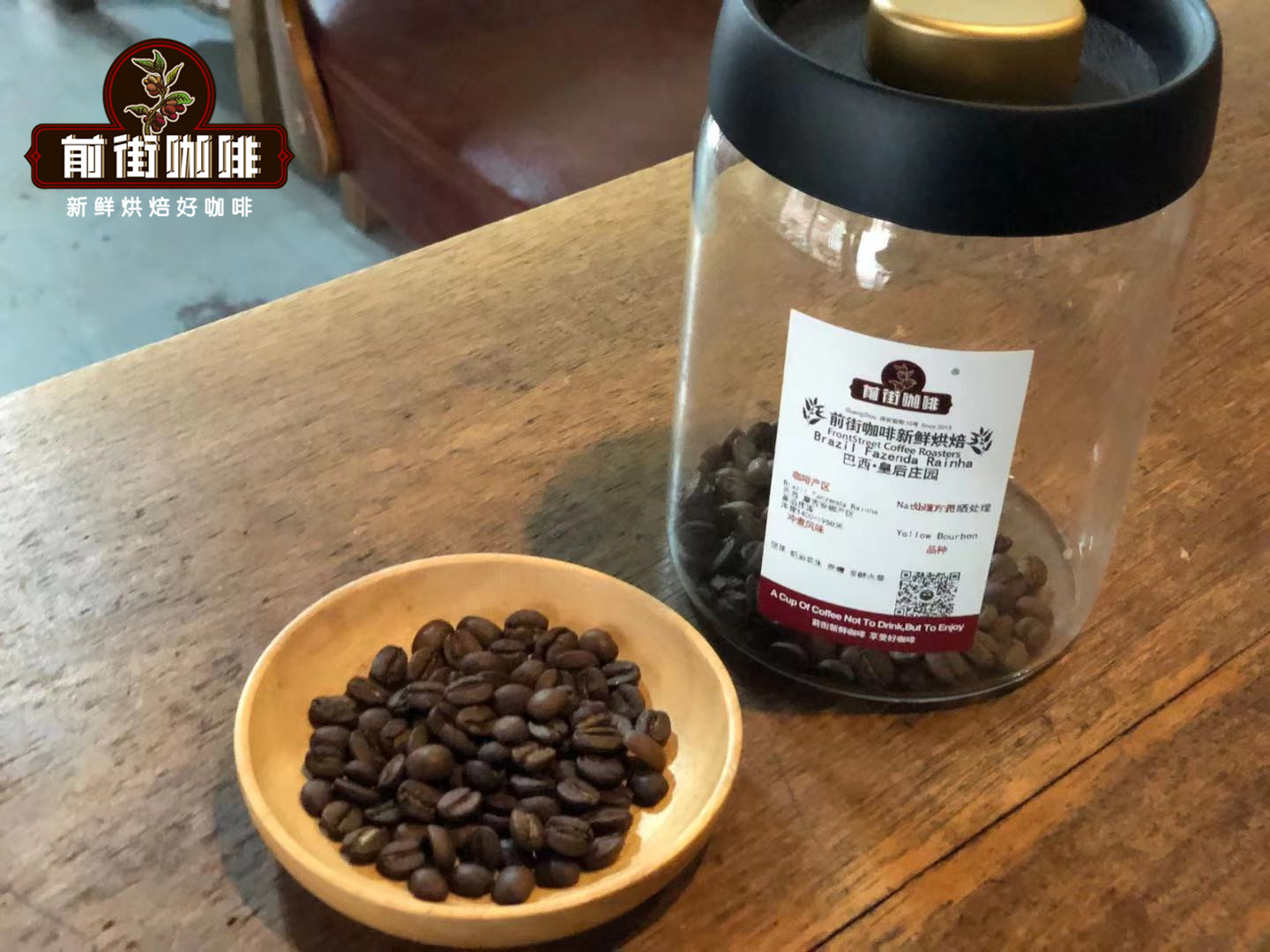
The Carvalho Dias family is also a founding member of the Brazilian Fine Coffee Association. The insistence on coffee quality and the maintenance of the environment are obvious to all. In the family farm, the use of natural waterfalls to develop pollution-free hydropower, self-sufficient electricity demand (another award-winning member of the family is named Falls Manor after this waterfall) Construction of churches, classrooms, nurseries, medical stations, maintenance of primitive forests of native animals and plants, and continuous afforestation. In the case of the Queen's Manor, the environmental protection is quite thorough. Because of the high terrain and non-plain terrain, it is impossible to use machines to harvest, and the fruits can be harvested completely by hand. And plant low-yield and high-quality bourbon species, as the essence of high-quality Brazilian coffee on behalf of the manor!
Brazilian Queen Coffee Bean peeling and Meat processing system (Coffee processing system)
The ripe cherry fruit is picked on the cloth bag by hand to avoid touching the ground. The coffee fruit harvested on the same day must be sent to the treatment plant to which the manor belongs for half-sun treatment (Pulped Natural). The coffee fruit is picked by hand and surrounded by cloth. This is to avoid the earthy taste and any improper fermentation flavor. When the harvested coffee fruit arrives at the processing site, wash the coffee fruit immediately: wash the coffee fruit clean. The unqualified or dried fruits (b ó ia beans) were screened out according to the size partition of the bean body, and the qualified beans were screened, and the peeling action continued (using the pulper machine).
There are 200 mu of Huangbo coffee trees planted in the manor, and the undulating mountains make it impossible for large-scale mechanical harvesting, so all the coffee here needs to be harvested by hand.
The manor is semi-washed, dried by a drying rack and baked by a dryer, and mechanical screening is supplemented by manual screening. a lot of work requires farm employees to live on the farm all year round. All employees and their families can enjoy housing, health care and education benefits here.
The estate is a member of a local Grama Valley medium-sized farm organization that mainly exports boutique coffee from bourbon varieties. The organization's office is located in nearby Pocos de Caldas, and they also have a national cup testing laboratory with a large warehouse. The group also works with local universities and other institutions to conduct research, including Lavras University, where the famous Dr. FlavioBorem is from its agricultural research center.
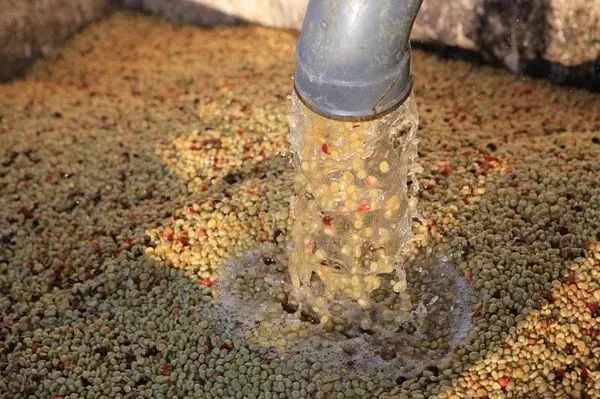
Award record of Queen's Manor
13th in 2014 COE Cup of Excellence
No. 02 COE Cup of Excellence in 2013
No. 08 COE Cup of Excellence in 2012
2011 COE Excellence Cup Champion
No. 20 in 2010 COE Cup of Excellence
No. 06 COE Cup of Excellence in 2009
No. 14 in 2008 COE Cup of Excellence
The Cup of Excellence (COE) extraordinary Cup project and trademarks are currently owned and managed by the Alliance for Coffee Excellence American boutique Coffee Alliance (ACE, a non-profit organization). Every year, ACE and the extraordinary Cup Project (Cup Test Competition) hold national cooperation to complete the cup screening and online auction of high-quality coffee, and to suggest and promote anything related to the improvement of coffee quality, in order to select a model of high-quality coffee in the host country and exchange experience for the industry to learn.
On the bourbon species
After the early (prehistoric coffee) iron pickup was transplanted to Yemen, the bean shape changed from thin and pointed to round. It was named bourbon in 1715 after France transplanted round beans from Yemeni mocha to the island of Bourbon on the east coast of Africa (renamed Reunion after the French Revolution). Bourbon beans spread to Brazil and Central and South America in 1727, and the British transplanted Yemeni mochas to St. Helena Island (where Napoleon was later imprisoned) in 1732.
Generally speaking, bourbon is a coffee tree that belongs to a branch of Arabica species, generally bearing red fruit, called red bourbon, in addition to yellow bourbon, orange bourbon, yellow bourbon relatively low yield, but better quality.
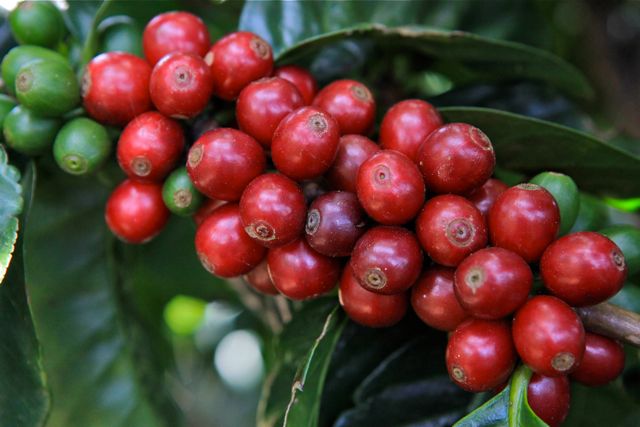
Bourbon, the second species caused by the Typica mutation, is the oldest coffee variety in existence, and the green fruit appears bright red when it is ripe.
Compared with the tin card species, the bourbon species has wider leaves and denser growth. although the seed setting is higher than the tin card, the harvest time is also 2 years, which is also a variety with less yield, but it has a high-quality taste, like the sour taste of red wine, and the aftertaste is sweet. Coffee bean granules are large in shape, uniform in size, uniform in color and glossy. In order to facilitate harvesting, farmers will prune coffee trees to no more than 150 centimeters.
The propagation route of bourbon species
Introduced to Brazil in 1727 because of its low yield and easy to interfere with diseases, the bourbon species was introduced to Brazil around 1860 via Campinas in the south and rapidly expanded northward to other parts of South and Central America. In Latin America today, although most of the bourbon species have been basically replaced by their varieties (especially Caturra,Catuai and Mundo Novo, etc.), bourbon is still grown in El Salvador, Guatemala, Costa Rica, Peru and other countries.
Yellow bourbon
On the other hand, the yellow bourbon species is a hybrid between the bourbon species and other varieties. Because of its low yield and relatively intolerant to wind and rain, it has not been widely planted. However, when planted in high altitude areas, it will have excellent flavor performance, which is more common in recent years.
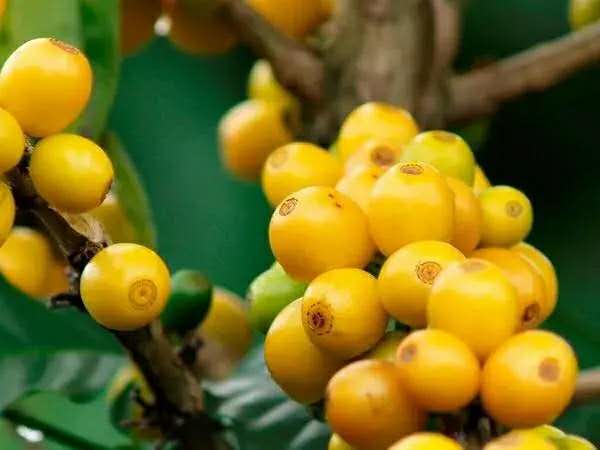
Yellow Bourbon, Huang bourbon, the mature consequence is actually yellow, was first found in Brazil, and now mainly grows in Brazil. It is generally believed that it may have been mutated by a cross between a bourbon with red fruit and a variety of iron pickup with yellow fruit called "Amerelo de Botocatu".
Qianjie Coffee Queen Manor of Brazil
Producing area: Morgiana
Altitude: 1400Muth1950m
Variety: yellow bourbon
Treatment: sun treatment
Flavor: sweet beans, clean, half-sun use will make her slightly bright acidity but also good with the sweet knot, some even have tropical fruit aromas.
This Brazilian queen coffee bean is 100% yellow bourbon, and its provenance can be traced back to Reunion Island, Madagascar, where bourbon originated. French explorers brought coffee here for the first time in the 18th century, so this breed is also called French missionary. In the 20th century, it was brought to the African continent and then introduced to Brazil, and its derived varieties are now all over Africa and America. The fruit of the bourbon species grown in Brazil is yellow because of its recessive genes.
This Brazilian queen coffee bean is treated with the Cerezadescascado method invented in Brazil, a natural treatment similar to honey treatment that makes the coffee taste more round, somewhere between washing treatment and full-sun treatment. During the treatment, a small amount of water is used to remove the pulp and peel, and then the coffee is dried directly on the drying rack, which is constantly turned over to ensure that all the coffee is exposed to the sun. after several days of drying, mechanical drying is carried out to achieve the appropriate water content.
The provenance of yellow bourbon can be traced back to Reunion Island, the birthplace of bourbon species in Madagascar. The bourbon species grown in Brazil have yellow fruits due to the influence of their recessive genes. Yellow bourbon beans are sweet and clean by nature. sunburn will make them slightly less sour, but they match well with sweetness, have a good balance and have tropical fruit aromas.
The properties of the treated coffee beans are relatively stable, can be preserved for a long time, the water content is low, and the coffee bean particles are relatively large. 98% of the beans can reach more than 16 mesh, and half of them can reach 18 mesh.
Baking analysis
The quality of raw bean is solid, the flavor is good, with a slight aroma of orange peel and spice, and the moisture content of raw bean is 9.9%.
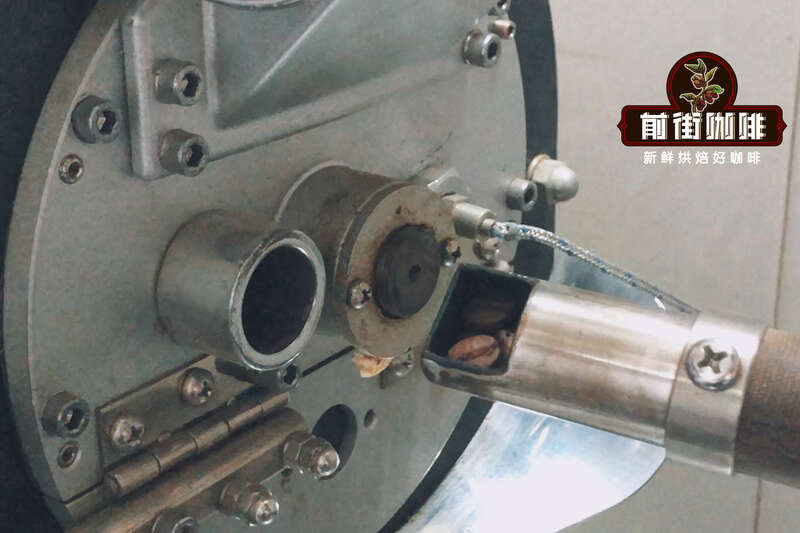
The water content of the beans is relatively low, which makes the beans have a strong ability to absorb heat, so the Qianjie coffee roasting plan is to put 200 degrees into the beans, then a big fire and a small throttle to speed up dehydration, and when the dehydration stage is over, open the stroke door and medium heat to let Maillard react. Time is not too fast, close to a burst tail out of the oven.
Machine: Yang family 800N, raw bean 550g
Input bean temperature: 200℃
Tipping point: 9 hours 39 percent 14 ", 188.9 ℃
After one explosion, the development was 1: 48 ", and 197.5 ℃ was released.
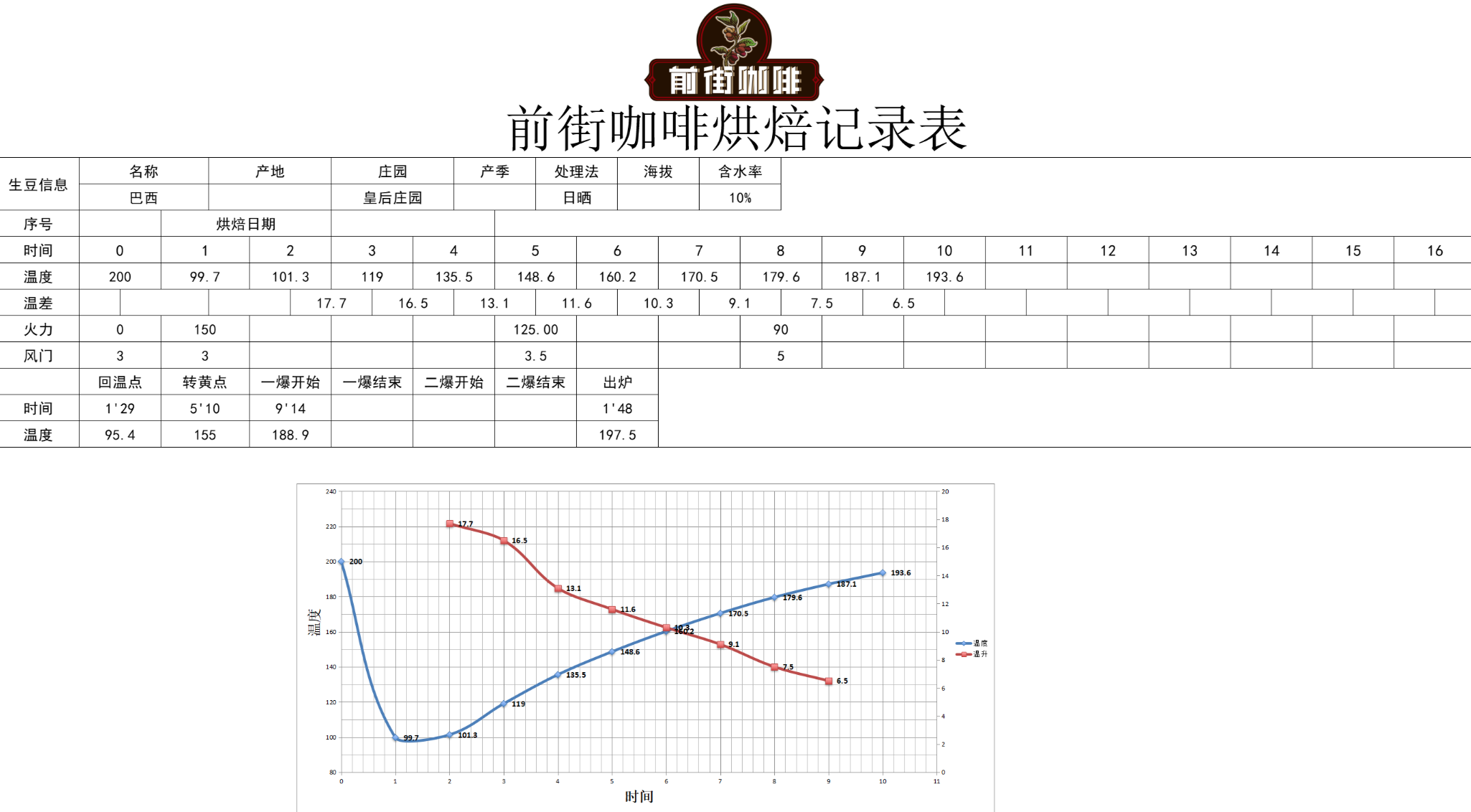
Qianjie coffee was baked 4 times before and after, and the final choice was between 1: 45-2 after the end of the explosion. Taste with obvious sweetness, but not so boring sweet, the background with a hint of lemon aroma, this aroma is more prominent in the wet fragrance stage, the latter part of the performance has an obvious taste of dark chocolate, the overall feeling is more round, while reflecting the overall characteristics of Brazil, without losing liveliness.
Cooking suggestion
Filter cup: Hario V60
Water temperature: 90 ℃
Amount of powder: 15g
Powder / water ratio: 1:15
Degree of grinding: medium and fine grinding (BG#6S)
Washing and cooking technique
Segmented extraction
Steam with 30 grams of water for 30 seconds, small flow circle injection to 125 grams, continue to inject water to 225 grams when the water level is about to be exposed, remove the filter cup when the water level is about to expose the powder bed, (steaming starts timing) the extraction time is 2: 00 ".
Flavor
The sweet and clean beans and the use of half-sun will brighten her acidity but match the sweetness, and some of them even have tropical fruit aromas, especially the overflowing aroma when cooking. Sugar cane juice's sweet, black tea, beautiful and smooth fruit sweetness, obvious nutty flavor, balanced and supple acidity, weak and clean bitterness, rich chocolate aroma and nutty flavor, bright and refreshing taste, smooth and delicate taste.
Red bourbon
After the red bourbon general coffee tree blossoms and bears fruit, the color change of the coffee fruit is: green > turn yellowish > turn slightly orange > turn mature red > turn more ripe dark red, so some people also call it [red bourbon], in fact, red bourbon, that is, what we call bourbon species. Bourbon planted at high altitude usually has a better aroma, while the acid is brighter and even tastes like red wine.
Qianjie Coffee in front Street Coffee in front Street
Country: Brazil
Producing area: Syrador
Altitude: 1000 m
Variety: red bourbon
Treatment: half-sun
Flavor: nuts, chocolate, cream, peanuts, caramel
Baking suggestion
Brazilian coffee beans are mainly mellow, and Qianjie coffee is roasted moderately in order to highlight this flavor.
Machine: Yang family 800N, raw bean 550g
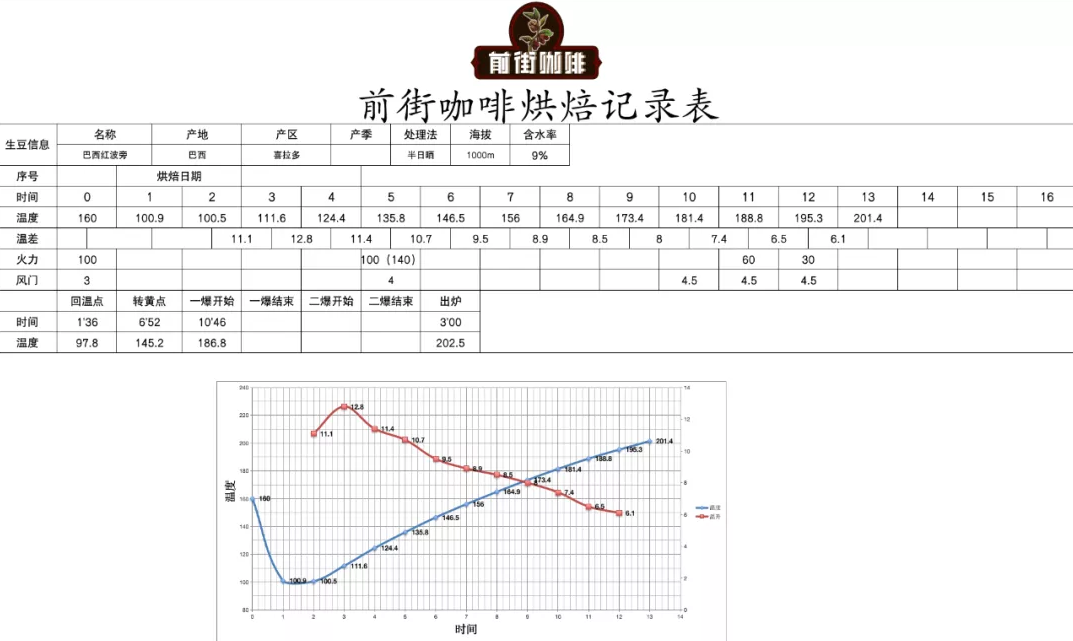
The temperature of soy beans is 160 ℃.
Turn yellowing point 6 / 3 / 39 / 52 ", 145.2 ℃
A burst point of 10: 39: 46 ", 186.8 ℃
The development after the first explosion is 3300 ", 202.5 ℃ comes out."
Cooking parameters
Filter cup: Kono filter cup
Water temperature: 88 ℃
Card powder: 15g
Powder / water ratio: 1:15
Degree of grinding: medium and fine grinding (Chinese standard No. 20 screen pass rate 70-75%)
Deep-roasted coffee beans to highlight the mellow feeling of coffee, Qianjie will choose Kono filter cup to brew. The characteristic of Kono filter cup is that it has the function of soaking, which can be used to extract more coffee substances and enhance the mellow taste. Because of its few ribs and located at the low end, the filter paper can be attached to the filter cup to achieve the effect of limiting air flow, so as to slow down the flow speed and increase the contact time of gouache.
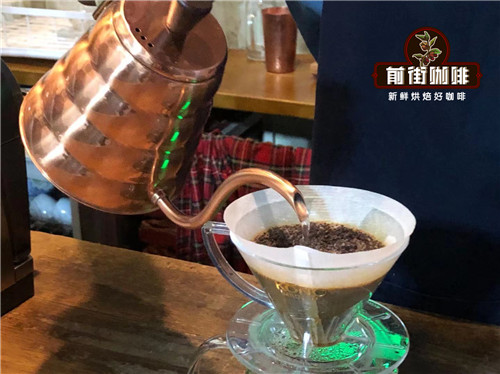
The water temperature is 88 ℃, which can be regarded as a lower cooking temperature, which can avoid excessive extraction of miscellaneous flavor of coffee beans in the cooking process, because the deeper the roasting degree of coffee beans is, the more miscellaneous smell will increase.
Qianjie coffee is extracted by stages, 30 grams of water is steamed for 30 seconds, small water is injected around the circle to 125 grams, when the water level is about to be exposed to the powder bed, continue to inject water to 225 grams to stop, (steaming starts) extraction time is 2 minutes.
Flavor description: the entrance has obvious sweetness, with a hint of lemon aroma, with a strong nutty flavor, the latter part has an obvious dark chocolate flavor, the overall feeling is more round.
Generally speaking, red bourbon and yellow bourbon of bourbon varieties are similar in flavor, with obvious dark chocolate, cocoa, nut and caramel flavor, supple acidity and low bitterness.
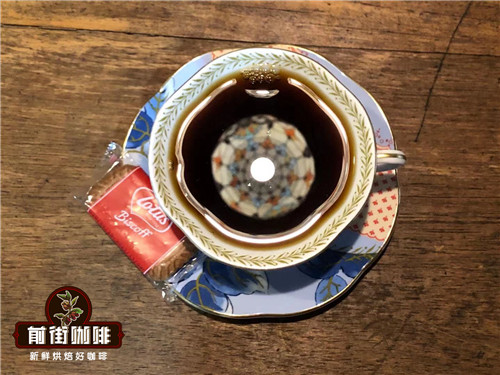
For more boutique coffee beans, please add private Qianjie coffee on Wechat. WeChat account: kaixinguoguo0925
Important Notice :
前街咖啡 FrontStreet Coffee has moved to new addredd:
FrontStreet Coffee Address: 315,Donghua East Road,GuangZhou
Tel:020 38364473
- Prev
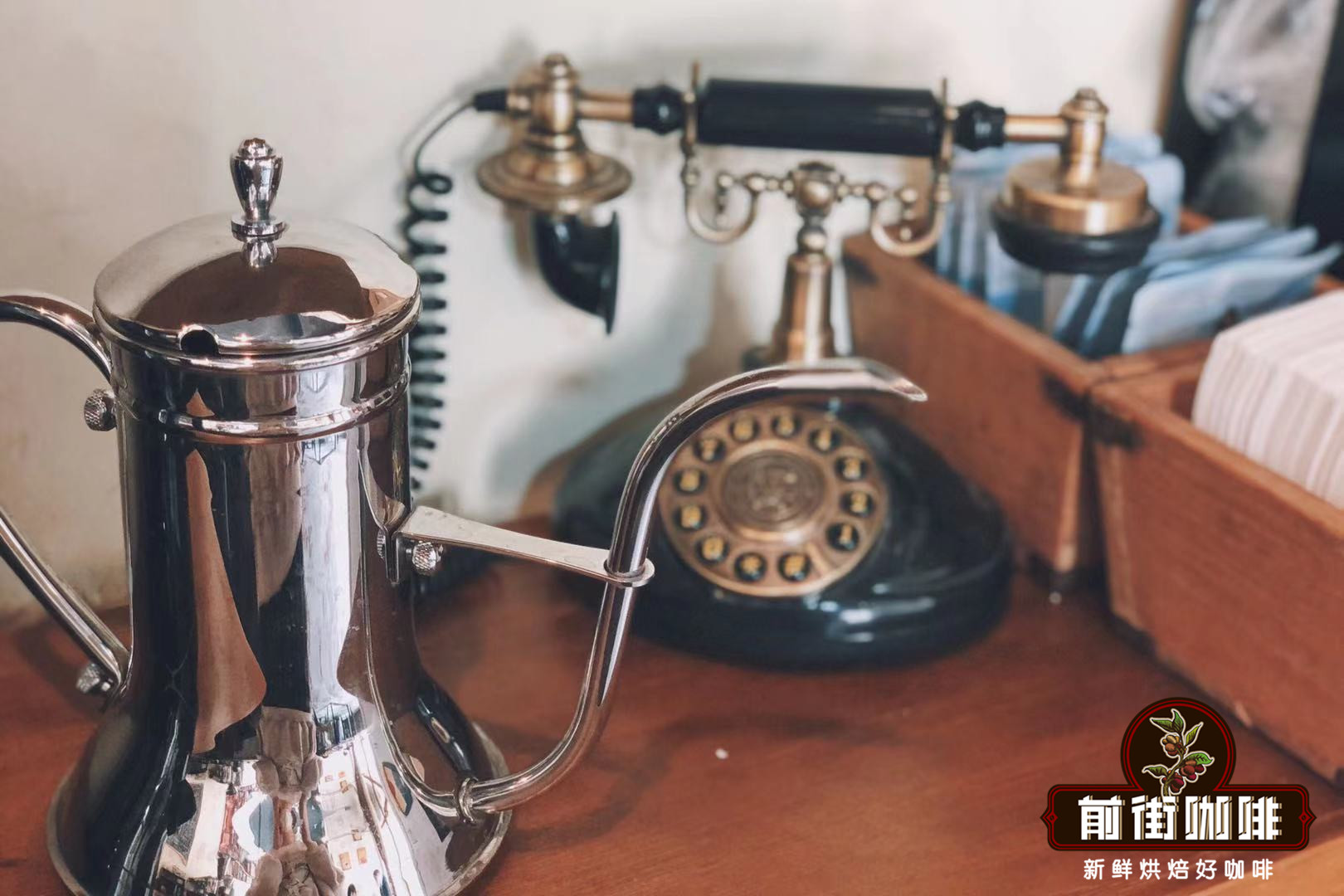
Latin American coffee bean flavor producing countries three major coffee varieties and seven major producing areas in the world
Latin American Coffee the unique tropical rain forest environment in parts of Bolivia provides excellent natural conditions for the growth of organic coffee. The aroma of Bolivian coffee is rich and unique, both after the bean is ground and the aroma of the coffee is quite rich, similar to the mixture of flower and fruit aromas, the perfect nutty flavor is impressive. [Bolivir]
- Next

Introduction to the flavor description and treatment of high-quality coffee beans in Honduras
From its independence in 1821 to 1978, Honduras has had 139 coups, making it one of the countries with the most frequent coups in Latin America. Ramon Bilda Morales of the Liberal Party won the election in 1957 as president. Oswald Lopez Arellano, commander of the armed forces, launched a coup instigated by the United States in 1963, overthrew the Morales regime, and was elected general in 1965.
Related
- Detailed explanation of Jadeite planting Land in Panamanian Jadeite Manor introduction to the grading system of Jadeite competitive bidding, Red bid, Green bid and Rose Summer
- Story of Coffee planting in Brenka region of Costa Rica Stonehenge Manor anaerobic heavy honey treatment of flavor mouth
- What's on the barrel of Blue Mountain Coffee beans?
- Can American coffee also pull flowers? How to use hot American style to pull out a good-looking pattern?
- Can you make a cold extract with coffee beans? What is the right proportion for cold-extracted coffee formula?
- Indonesian PWN Gold Mandrine Coffee Origin Features Flavor How to Chong? Mandolin coffee is American.
- A brief introduction to the flavor characteristics of Brazilian yellow bourbon coffee beans
- What is the effect of different water quality on the flavor of cold-extracted coffee? What kind of water is best for brewing coffee?
- Why do you think of Rose Summer whenever you mention Panamanian coffee?
- Introduction to the characteristics of authentic blue mountain coffee bean producing areas? What is the CIB Coffee Authority in Jamaica?

